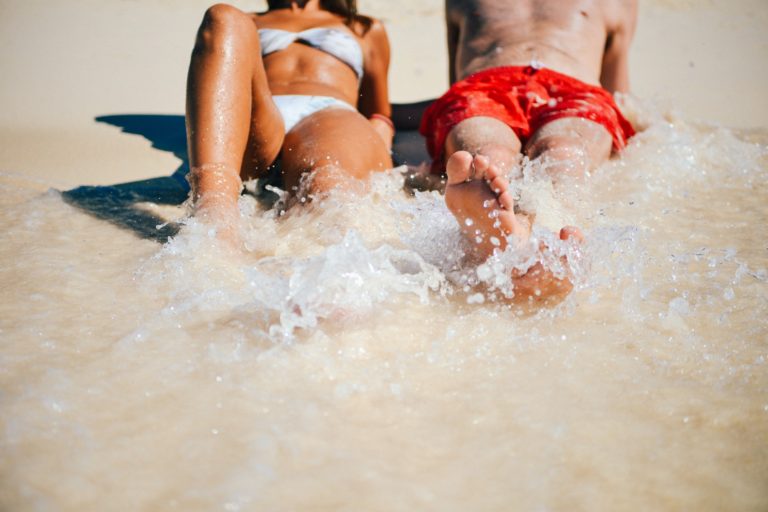Learn how electrolyte levels and carbohydrates can keep you healthy, happy and performing your best.
Summer is prime time for outdoor sports, family vacations, BBQs, festivals and long days in the sun. While you are enjoying those activities and the hot weather, it’s easy to be hit by dehydration—and most people don’t see it coming. Summer is also prime time for dehydration, electrolyte imbalances and even heat stroke—all of which are more common than you might think. Let’s explain.
Today, more than 50 percent of all children and adolescents in the U.S. are not getting the hydration they need, according to research from the Harvard T.H. Chan School of Public Health. And that number jumps even higher when you put them, or adults for that matter, on the playing field. In a study in the International Journal of Sport Nutrition and Exercise Metabolism of 11- to 16-year-old children participating in a summer soccer camp, nine out of 10 of them were under-hydrated, putting them at risk of serious health complications.
This summer, keep your family on top of its game with these six hydration-boosting tips:
1. Help Yourself to Hydration-Boosting Nutrients
To stay hydrated, you and your family often need more than water. You also need electrolytes and carbohydrates, explains Pam Nisevich Bede, MS, RD, a sports dietitian with Abbott.
While both nutrients can help your body absorb whatever fluids you drink, electrolytes – sodium, chloride, potassium, magnesium and calcium – are especially important because they are critical to healthy nerve and muscle function. And, all of these electrolytes can be lost through sweat, she says.
Fortunately, electrolyte drinks like Myoplex Hydrate and Pedialyte contain both electrolytes and carbohydrates, which Bede advises consuming when exercising for longer than 60 minutes or during any activity performed in extreme temperatures.
2. Don’t Forget Foods
Your food (not just beverage!) choices can account for approximately 20 percent of your daily fluid intake, and are therefore a major contributor to you and your family’s overall hydration status. Luckily, many foods that are in season in the hot summer months – such as melon, tomatoes and strawberries – are naturally rich in water, carbohydrates and minerals, including those all-important electrolytes.
In addition to dishing out juicy produce as a pre- and post-workout snack (orange slices, anyone?), infusing water with fresh fruit and vegetables like cucumber can give your ordinary bottle of water an extraordinary and healthy dose of flavor.
That flavor boost may be your secret weapon in getting your children to drink up – which is vital since children are at an increased risk of dehydration and heat stroke due to their body composition. Research from McMaster University shows that when provided with beverages that contain flavor, carbs and the electrolyte sodium chloride, young boys voluntarily drink up to 90 percent more fluid than they do otherwise. Parenting for the win!
3. Check the Toilet
Without getting too vivid, your urine color can function as a simple indicator of your hydration status, Bede says. Before, during and after outdoor activities, take a quick look at your urine output. If your urine is a light lemonade color, it’s likely that you are properly hydrated. Dark yellow urine (as in dark or darker than apple juice) typically signals dehydration and need for immediate rehydration, she says.
4. Weigh Yourself Before and After Exercise
Sweating is a major contributor to dehydration during summer sports. Sweat quickly evaporates off of the skin, especially when you are in extreme temps. To gauge your sweat losses and consequent hydration needs, Bede recommends weighing yourself naked both before and after exercising. Every pound lost between the beginning and end of an exercise routine represents 16 ounces of water – gone.
Losing less than 1 percent of your bodyweight during the course of your workout is optimal, she says. Once you lose 1 percent of your body weight in water (so if you weigh 180 pounds, 1.8 pounds), exercise performance begins to suffer and fatigue can set in. “You might be running an 8-minute mile, but it will feel like you are pushing a 6-minute pace,” she says.
5. Drink the Night Before a Morning Workout
To stay one step ahead of the disastrous effects of dehydration, it’s important that everyone starts their day and or workout hydrated, drink during activity and rehydrate when it’s over. If you or your kids have a morning workout on the agenda (summer camps and tournaments, anyone?), you need to prioritize hydration the night before, Bede says. That’s because, after spending eight hours in bed not drinking anything, it’s easy to wake up in a dehydrated state, and that’s even before you factor in exercise.
Bede recommends drinking plenty of water a couple of hours before bed and upon waking. Try water and healthy juices at breakfast to get the kids to drink up.
6. Opt for Water (Not Soda!) During Airplane Flights
During summer travel with your family, stints in airports and on airplanes can be very dehydrating. It’s easy not to drink as much as you usually do when you’re on the go, and airplanes are known for low-humidity air that contributes to low hydration statuses upon touchdown.
Pack an empty refillable water bottle in your family’s carry-on bags and, after going through security, fill them up with water. Many airports now have water fountains designed specifically for refilling water bottles. Pack a Pedialyte powder stick to add to your water to make sure you’re replenishing needed electrolytes. Skip the vending machine soda and, when the beverage cart passes through the cabin on your flight, opt for water. “Soft drinks do a poor job at rehydration and the high sugar concentration can interfere with your body’s ability to absorb water,” says Bede.



